***This article originally appeared in the December ‘18 issue of Animation Magazine (No. 285)***
Although filmmaker Damien Chazelle is best known for the music-centric features Whiplash and La La Land, he delivers a visually stunning chronicle of astronaut Neil Armstrong’s historic trip the moon in the acclaimed new feature First Man. As much as the modus operandi was to shoot everything practically and in-camera with the help of production designer Nathan Crowley, the scenes taking place in outer space required digital augmentation provided by Paul Lambert who was part of the Oscar-winning visual effects team responsible for Blade Runner 2049.
“When I first joined the show, Damien gave me a PDF file which was 300 pages of what the First Man was going to be,” recalls Lambert. “I had never come across this before. It was like seeing into the mind of one of the top directors in the country.” He says Chazelle and cinematographer Linus Sandgren would screen some of the inspirations for the film every Sunday morning in an an industrial space just outside of Atlanta.
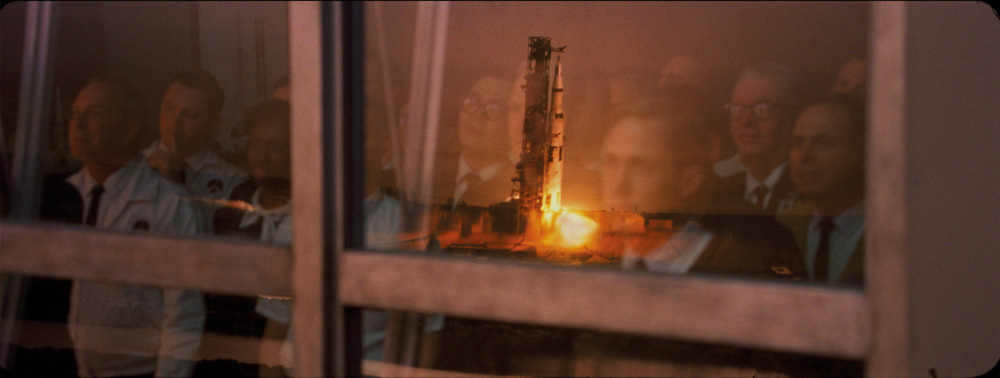
The filmmakers required no grandiose concept designs. “This was one of those movies where you had reference for every single section. For the launch of the Apollo 11, we took real archival footage [of Apollo 14], cleaned it up, reframed it and then added CG either side. First Man has such a range of different effects. It’s got a contemporary LED setup, archival clean-up and repurposing, miniatures, and all-CG shots.”
A guiding principle for the space travel was using full-scale builds or bigatures in the foreground, miniatures in the midground and CG for the distance. “The full-scale Lunar Module [LM] was a huge beast, so having legs would have been problematic for camera moves,” explains Lambert. “The top section was filmed in-camera and then we added CG legs.” Each sequence had different issues. “For interior shots of the X-15 or Gemini and Apollo capsules or LM, we used an LED screen which was 35-foot tall and 60-foot across that projected CG backgrounds.” Ninety minutes of CG content needed to be created. “What that LED screen provided was huge. For example, in the X-15 you get all of the interactive light and reflections. We even got reflections in the eyes of Neil Armstrong [Ryan Gosling], which are tricky to do if that had been shot with greenscreen.”
The production relied on Nathan Crowley (Interstellar) to produce miniatures required within the art department. “I decided if we bring it in house we could afford it,” notes Crowley. “I hired Ian Hunter of New Deal Studios to do the final finishes and to organize the shoot, because he’s an expert at that.”
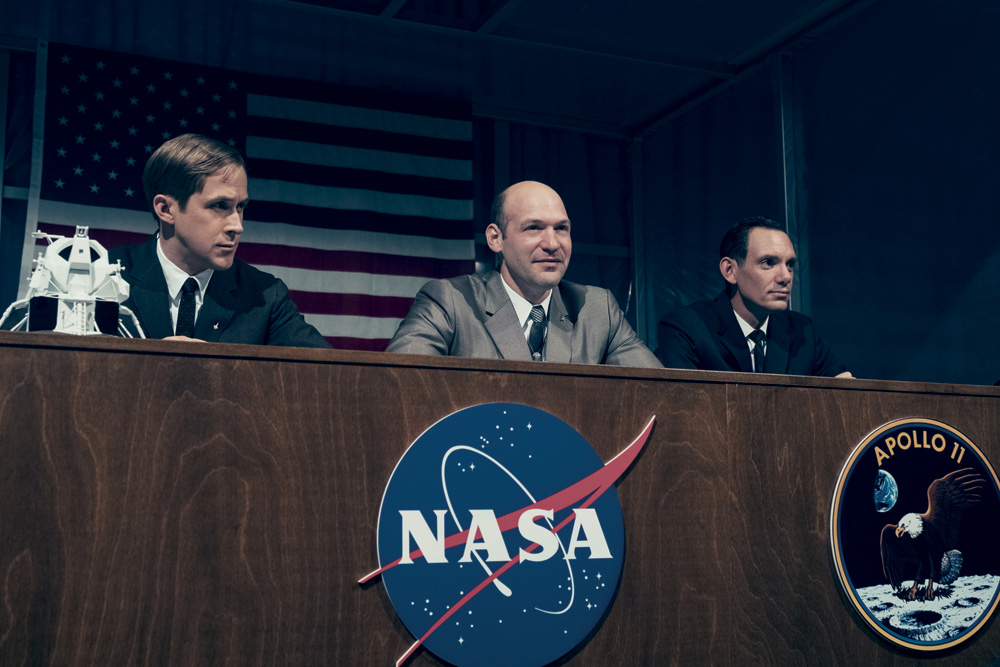
The four-time Academy Award nominee says he believes in combining new technology with old techniques. “With new slicing software you can take a big scale model, chop it up and print it overnight on 18 3D printers. Of manufacture printers, you might get a great one and an absolute rubbish one. We literally ran those printers 24 hours a day for six months so we would burn them out. This German company called BigRep has developed a metre by metre print bed and lent us two of their machines so we could print an Apollo 11 capsule in one go.”
The biggest location challenge was finding a site to shoot the famous moon landing. “You couldn’t do that on a stage, plus we couldn’t get the light high enough on a soundstage,” notes Crowley. “Everywhere you look in Atlanta there are trees and hills. I asked location manager Kyle Hinshaw what I thought was a dumb question: ‘Do you have a giant quarry in Georgia?’ He said, ‘Yeah. We do.’ The quarry owners were excited and sculpted five acres for us with their big machines. Tranquility Base was 500 foot by 500 foot with a full-size LM. They sculpted slowly rising embankments to hide all of the trees so we could get from gray to night sky black. Paul Lambert then took those berms and put the distant stuff of the moon in. The hardest thing was for the crew because you’re like, ‘Don’t walk on the moon!’”
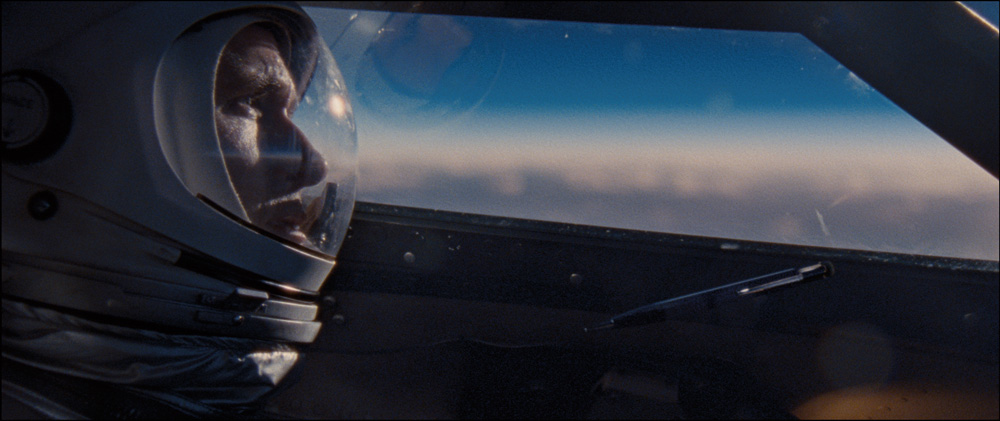
“There was some dailies footage where you could see the moon on the moon,” laughs Lambert. “I personally liked that juxtaposition! We tried our best on the day to clean-up the set and sweep different areas, but there was always going to be telltale signs of manmade lines. There was the extension to the horizon. In nearly every shot the astronauts wear gold reflector sun visors which are essentially like having chrome balls onset so you always see the IMAX camera and crew. A lot of work went into creating a digital version of the moon and removing the IMAX camera.” Two experimental 200K SoftSun lights were provided specially by Luminys at the request of cinematographer Sandgren (Battle of the Sexes).
“Unfortunately, one exploded after about an hour, and a few hours later the other one blew-up,” recalls Lambert. “What ended up happening was we had these shots with these amazing shadows that you’ve never seen on a set before. After we switched to the two 100K stacked together, it gave us a different shadow. In post we sharpened the shadows so there wasn’t a discontinuity between the two setups.”
Around 615 visual effects shots needed to be created. “It was more about trying to come up with the most efficient way to produce this massive amount of content [for the LED screen],” states Lambert. “It did catch us off guard as to how much we would have to produce. We did rely heavily on Terragen for our environments. It’s a fantastic program. For the full CG flying through the clouds in the X-15 it worked wonders. We added to it as well. When Neil is coming down through the clouds and is just about to land, he goes over the ridges into the lakebed. There were helicopter plates which we shot and stitched together, but everything up in the clouds was nearly all CG. We had to come up with a way to replicate the content on the screen so to add extensions or change stuff.”
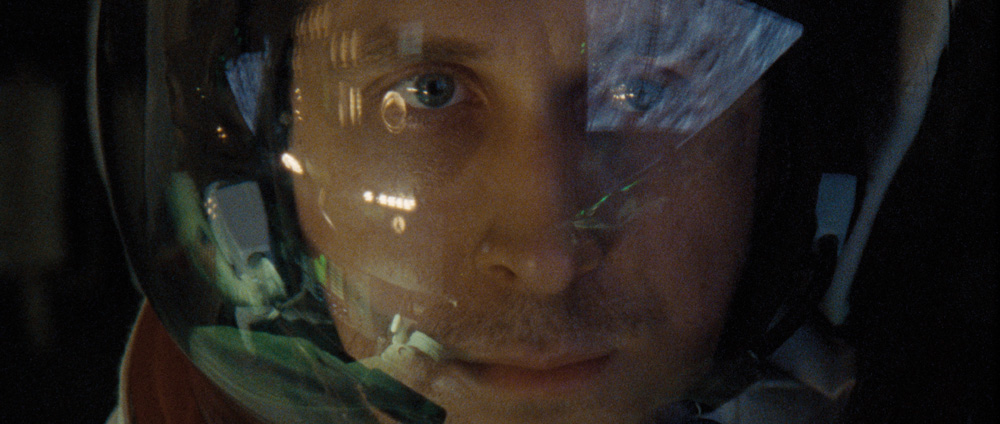
Of course, there was no room for error. “I told the crew that we can’t mess this up because we have reference as to what it all looks like,” reveals Lambert. “It’s going to be a version with a lot more clarity than what you see from the archival reference. You come across people who really have an appreciation for the whole Apollo program and landing on the moon. They know everything to the exact bolt on the LM. It was important to make sure that things were completely believable and did not look like CG. The fact that we came up with methods to shoot [as much in-camera] made First Man feel like one cohesive film.”
First Man is in theaters now through Universal Pictures.
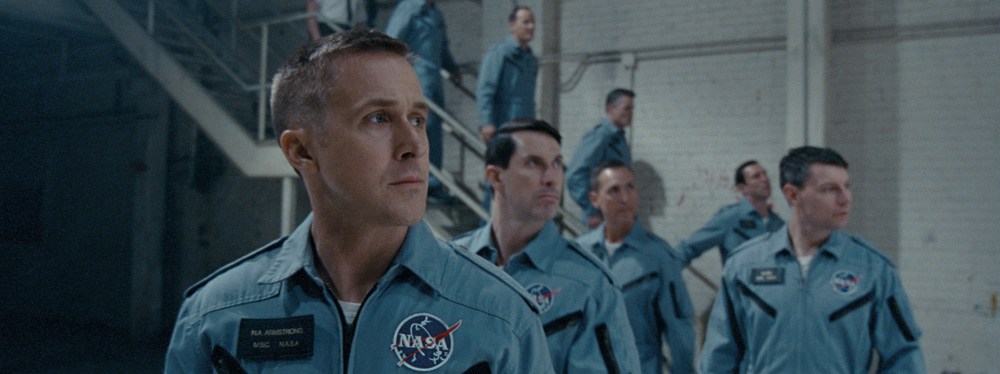
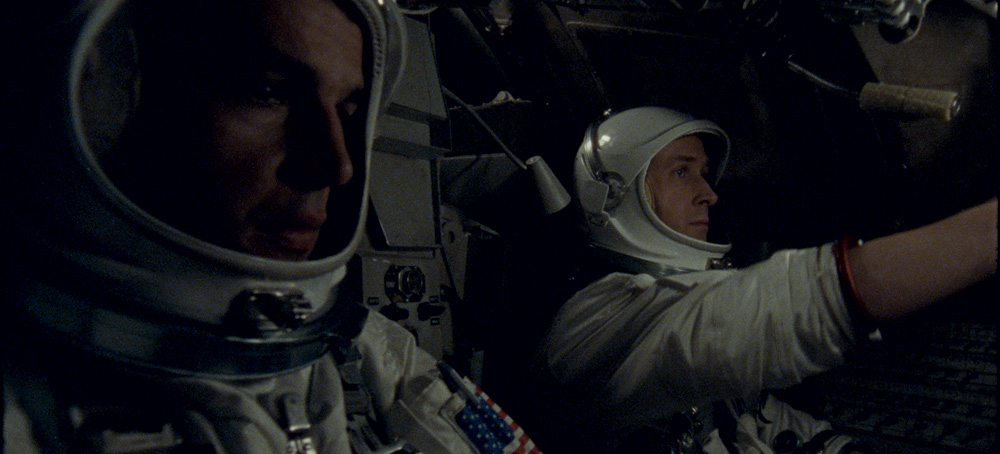
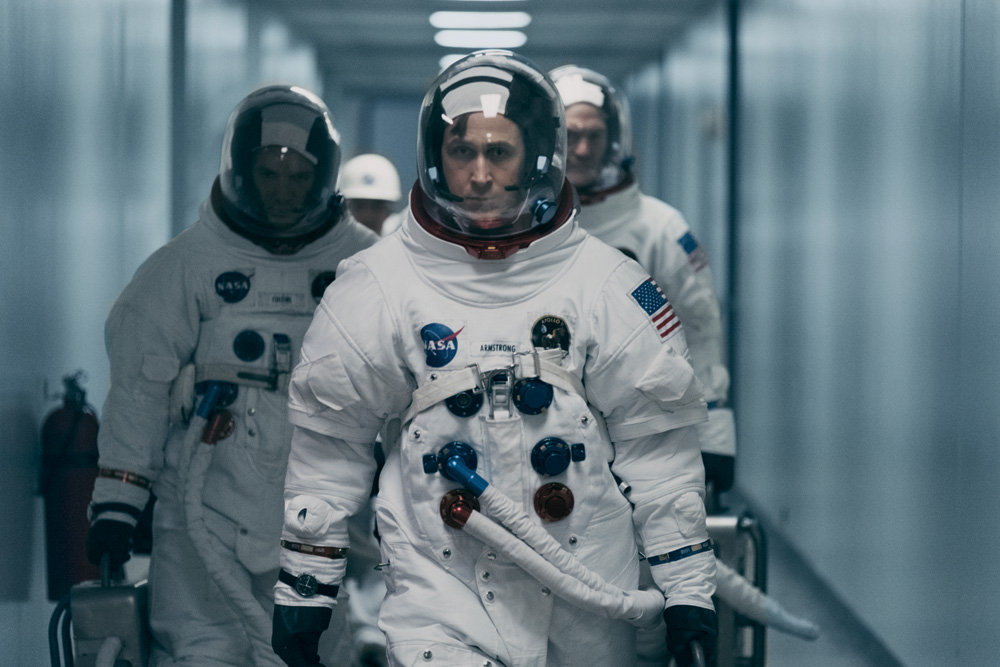










 Win a Funko X Lilo & Stitch Prize Pack!
Win a Funko X Lilo & Stitch Prize Pack! 


